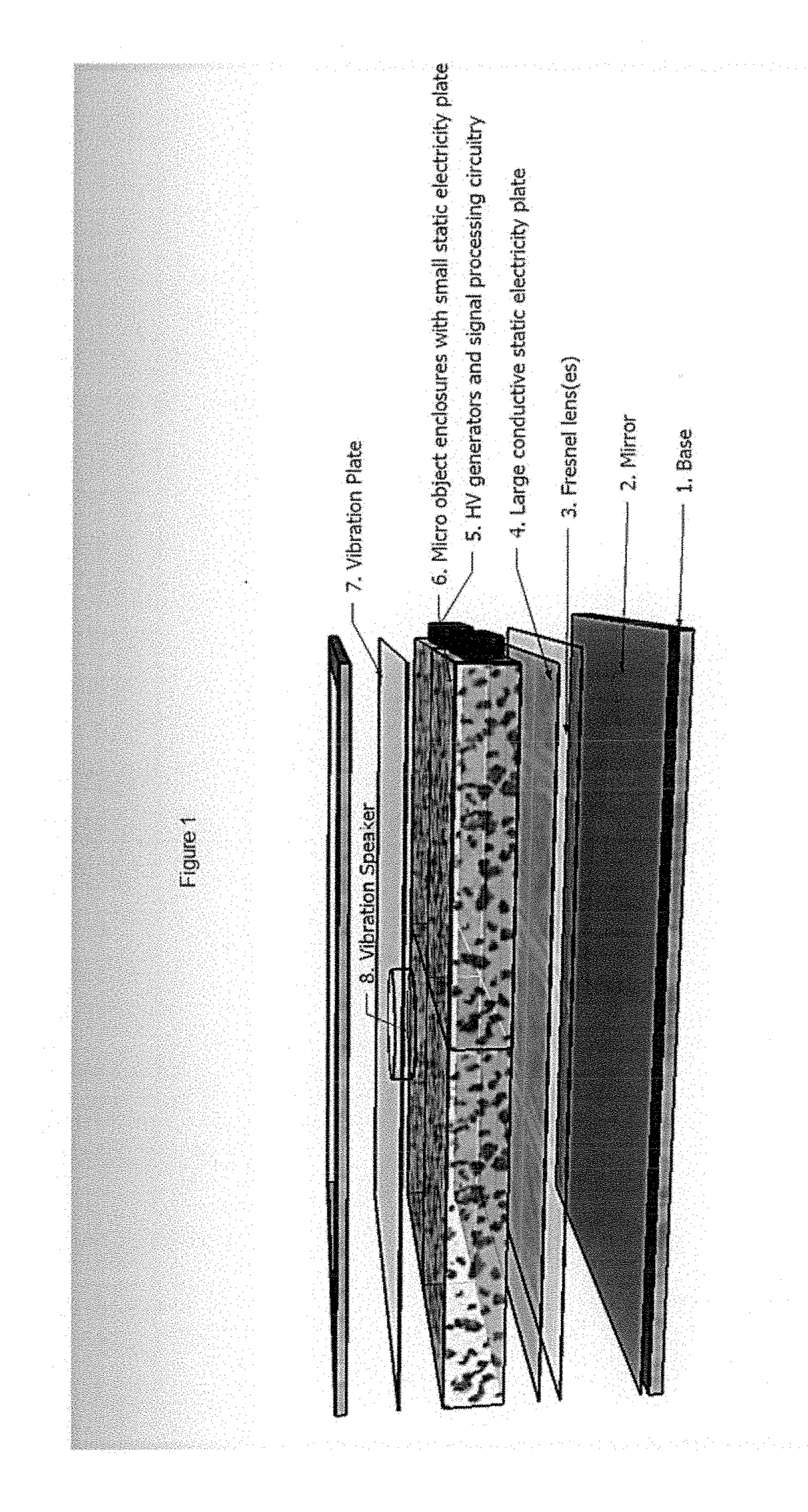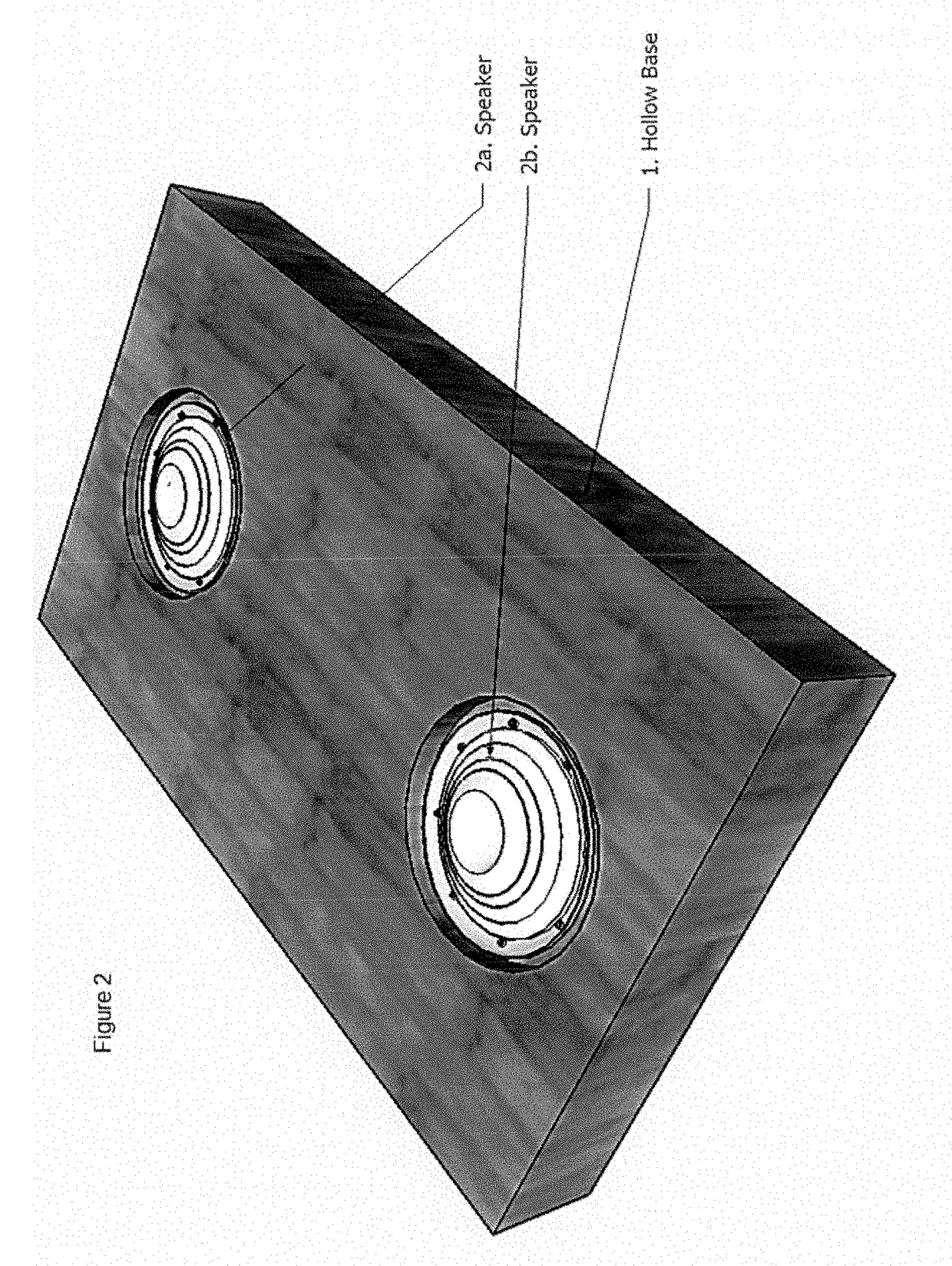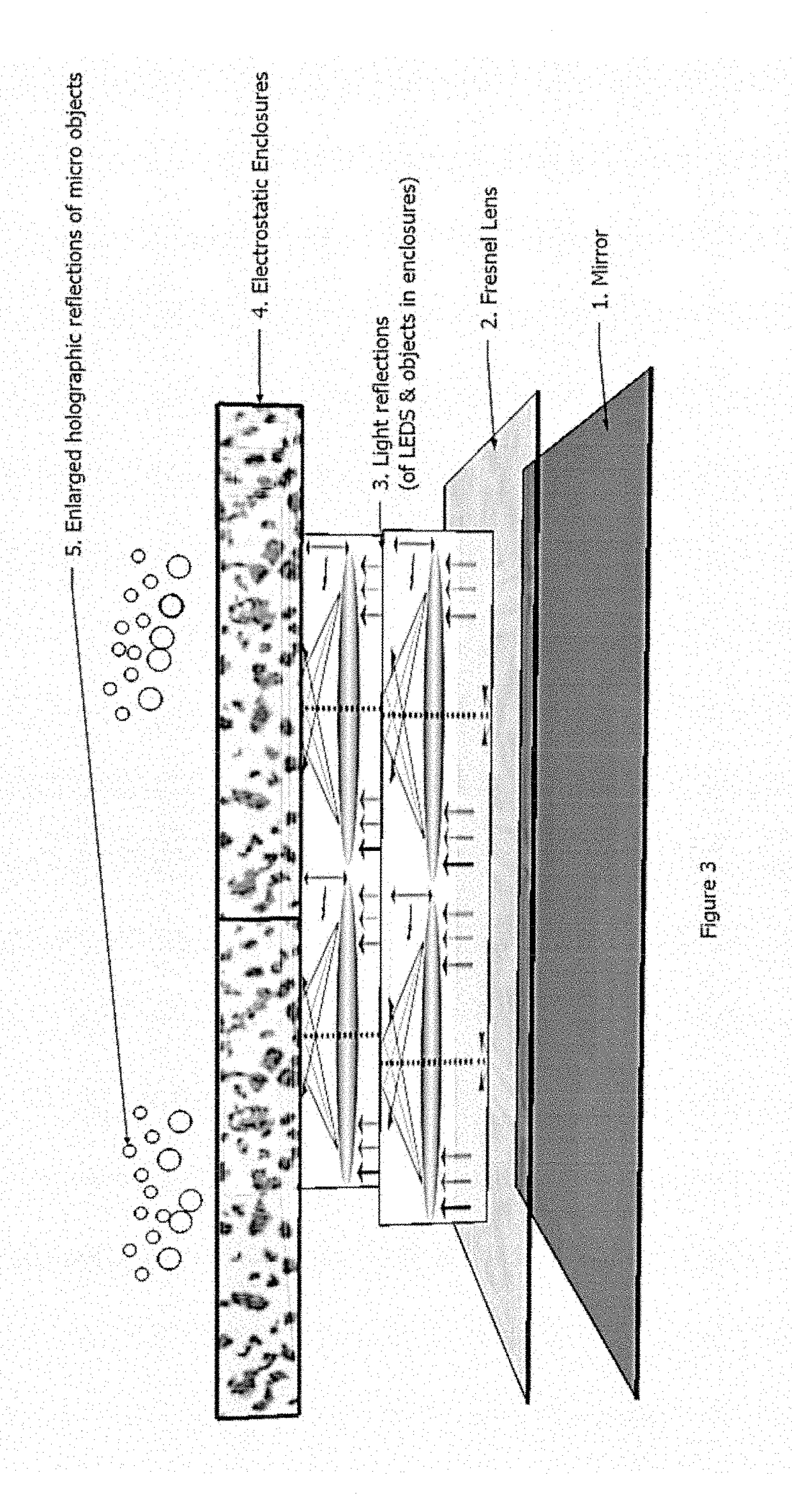Visual Representation of Electromagnetic Signals Utilizing Controlled Electrostatic and Electromagnetic Vibration Energy within Transparent Conductive Enclosures
a technology of electromagnetic signal, which is applied in the field of visual representation of electromagnetic signals utilizing controlled electrostatic and electromagnetic vibration energy within transparent conductive enclosures, can solve the problems of not being able to display sounds in real time, not being able to display sound in three-dimensional real world space, and not being able to easily allow other methods of physically displaying signals to be incorporated, so as to achieve a deeper, less metallic sound
- Summary
- Abstract
- Description
- Claims
- Application Information
AI Technical Summary
Benefits of technology
Problems solved by technology
Method used
Image
Examples
Embodiment Construction
[0038]This invention can be used as an audio receiver, speaker system, audio visual display, as a piece of display art, musical instrument or any combination of these applications where most functions of this apparatus including what audio or signal to input, intensity of display and light color / pattern selections can be controlled from a mobile device or computer via bluetooth or wifi or any other system which allows for similar connectivity. This invention can also be used as a scientific display apparatus which allows the viewer to specifically see not only the effects of sound waves and other electromagnetic signals on physical matter and the general cymatic geometry of soundwaves, thereby viewing the frequency response of a particular input signal but also the signal amplitude, rhythm and tempo using the effects of controlled static electricity, electromechanical vibrational energy on physical matter and the correlation and interplay between energy, light and matter in general....
PUM
 Login to View More
Login to View More Abstract
Description
Claims
Application Information
 Login to View More
Login to View More - R&D
- Intellectual Property
- Life Sciences
- Materials
- Tech Scout
- Unparalleled Data Quality
- Higher Quality Content
- 60% Fewer Hallucinations
Browse by: Latest US Patents, China's latest patents, Technical Efficacy Thesaurus, Application Domain, Technology Topic, Popular Technical Reports.
© 2025 PatSnap. All rights reserved.Legal|Privacy policy|Modern Slavery Act Transparency Statement|Sitemap|About US| Contact US: help@patsnap.com



